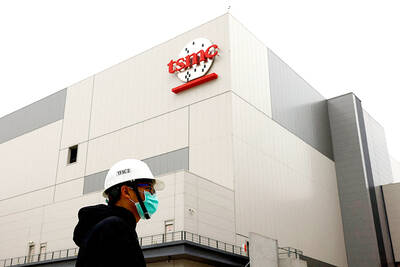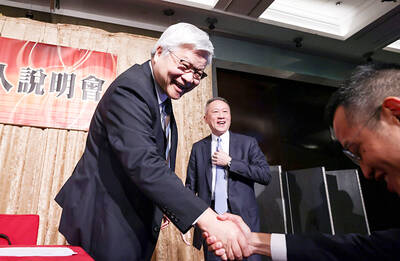The US dollar on Friday gained ground and measured its biggest weekly gain since early April as investors worried about a slowing economic recovery, rising COVID-19 infections in Europe, uncertainty about US stimulus, and the upcoming elections here.
While orders for key US capital goods increased more than expected last month, orders for durable goods — ranging from toasters to aircraft — which are meant to last three years or more, rose 0.4 percent after jumping 11.7 percent in July.
With so much for investors to feel uncertain about, J.B. Mackenzie, managing director of futures and forex at TD Ameritrade sees increasing volatility ahead of the Nov. 3 US elections and as a result, more demand for the US dollar.
“The election and stimulus and the continued economic recovery, those three parts, if those are not working lock step, there very well could be a movement to the dollar as that flight to safety trade,” Mackenzie said.
Mackenzie is looking at factors such as the UK’s struggle to come up with a plan to exit the EU as an overseas factor that could also keep the US dollar strong.
While the greenback fell slightly on Thursday, after four days of gains, as equities rose on hopes for stimulus, the US currency’s rally resumed on Friday as worries resurfaced.
“Yesterday was a calmer more positive sentiment ... then this morning’s durable goods show that the pace of growth in the United States is very uneven,” said Juan Perez, senior currency trader and strategist at Tempus Inc.
Along with weaker US and overseas economic data and expectations, Perez said that US dollar demand was also boosted by Washington’s failure to create a stimulus package and concerns ahead of the US election.
Top Republicans on Thursday repudiated US President Donald Trump’s refusal to commit to a peaceful transfer of power after Trump said on Wednesday that he expects the election result to end up being settled by the Supreme Court.
“In times like that when the chaos and havoc and blurriness of the future is so intense and so dense, that’s when the dollar is going to rise once again,” Perez said. “Markets are always going to be afraid when a strong government does not give clarity about continuance, about stability.”
In Taipei, the New Taiwan dollar yesterday dropped against the greenback, shedding NT$0.001 to close at NT$29.276 on turnover of US$105.5 million, losing 0.43 percent from NT$29.152 a week earlier.
The US dollar index, which measures the greenback against a basket of major currencies, was last up 0.31 percent at 94.601 and was on track for its best weekly percentage gain since the week early April.
With five straight days of gains against Japan’s yen, the greenback showed its strongest weekly gain versus the yen since early June. For the day, the yen was lower against the US dollar at ¥105.60.
The euro had its largest weekly fall against the US dollar since early April. For the day the euro was down 0.40 percent at US$1.1627, after hitting a roughly two-month low.
The US dollar, in a six-day rally against the Swiss Franc, showed its biggest weekly rise also since early April against that currency.
Additional reporting by staff writer

Stephen Garrett, a 27-year-old graduate student, always thought he would study in China, but first the country’s restrictive COVID-19 policies made it nearly impossible and now he has other concerns. The cost is one deterrent, but Garrett is more worried about restrictions on academic freedom and the personal risk of being stranded in China. He is not alone. Only about 700 American students are studying at Chinese universities, down from a peak of nearly 25,000 a decade ago, while there are nearly 300,000 Chinese students at US schools. Some young Americans are discouraged from investing their time in China by what they see

Taiwan Semiconductor Manufacturing Co (TSMC, 台積電), the world’s largest contract chipmaker, yesterday reported record sales for the first quarter, which analysts attributed to solid demand for emerging technologies. Consolidated revenue totaled NT$592.64 billion (US$18.51 billion) in the January-to-March period, up 16.5 percent from a year earlier, but down 5.26 percent from the previous quarter, TSMC said in a statement. The first-quarter revenue beat analysts’ average projection of NT$579.5 billion, Bloomberg News reported. That performance lends weight to expectations that the world’s most valuable chipmaker would return to solid growth this year after weathering a post-COVID-19-pandemic cratering of smartphone and computer sales. TSMC is budgeting

MAJOR DROP: CEO Tim Cook, who is visiting Hanoi, pledged the firm was committed to Vietnam after its smartphone shipments declined 9.6% annually in the first quarter Apple Inc yesterday said it would increase spending on suppliers in Vietnam, a key production hub, as CEO Tim Cook arrived in the country for a two-day visit. The iPhone maker announced the news in a statement on its Web site, but gave no details of how much it would spend or where the money would go. Cook is expected to meet programmers, content creators and students during his visit, online newspaper VnExpress reported. The visit comes as US President Joe Biden’s administration seeks to ramp up Vietnam’s role in the global tech supply chain to reduce the US’ dependence on China. Images on

US CONSCULTANT: The US Department of Commerce’s Ursula Burns is a rarely seen US government consultant to be put forward to sit on the board, nominated as an independent director Taiwan Semiconductor Manufacturing Co (TSMC, 台積電), the world’s largest contract chipmaker, yesterday nominated 10 candidates for its new board of directors, including Ursula Burns from the US Department of Commerce. It is rare that TSMC has nominated a US government consultant to sit on its board. Burns was nominated as one of seven independent directors. She is vice chair of the department’s Advisory Council on Supply Chain Competitiveness. Burns is to stand for election at TSMC’s annual shareholders’ meeting on June 4 along with the rest of the candidates. TSMC chairman Mark Liu (劉德音) was not on the list after in December last